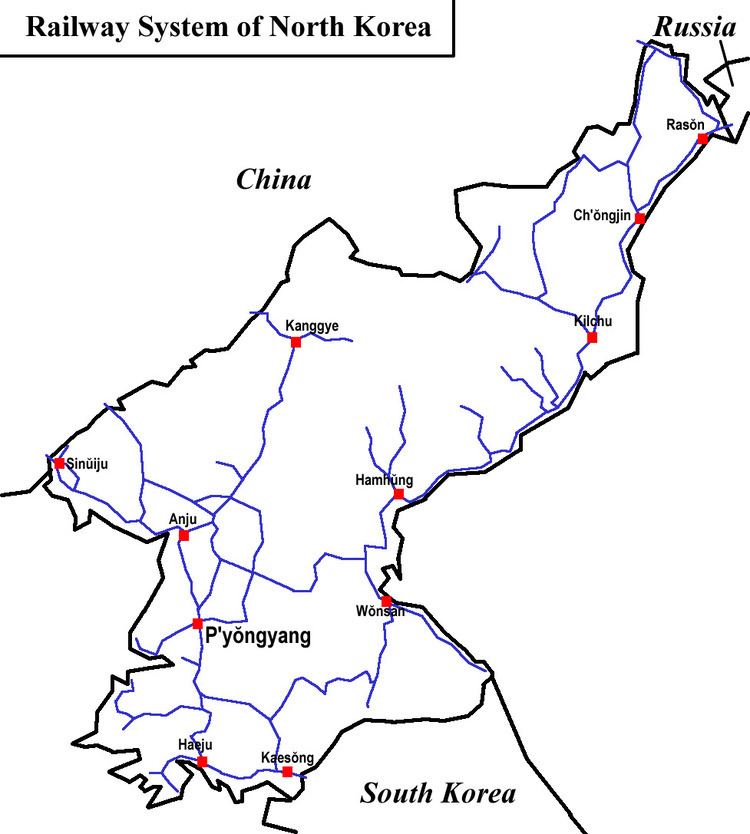 | ||
Rail transport in North Korea is provided by Korean State Railway (조선 민주주의 인민 공화국 철도성, Chosŏn Minjujuŭi Inmin Konghwaguk Ch'ŏldosŏng) which is the only rail operator in North Korea. It has a network of over 6000 km of track, of which the vast majority is standard gauge; there is, however, nearly 400 km of narrow-gauge lines (762 mm) in various locations around the country.
Contents
Routes
In many cases, the name of the line is a combination of the names of the original termini. This is analogous to the Bakerloo line (Baker Street to Waterloo) in England. However, because of the division of Korea, some lines now terminate short of their original destinations. The following lists the main standard-gauge trunk lines:
Pyongyang Metro
The Pyongyang Metro operates the only known underground mass transit in North Korea, offering extensive network of underground services within Pyongyang. Metro services are also supplemented with above-ground tram services in both Pyongyang and a number of secondary cities.
China
The primary rail gateway to North Korea is via the Sino-Korea Friendship Bridge from Dandong, China to Sinuiju, North Korea. Passenger trains are taken as far as Dandong by the China National Railway at which point the domestic Chinese carriages are uncoupled and North Korean carriages and locomotive are attached. Chungjin also has connections to the Chinese system.
Russia
Rajin has a rail link to the Russian system over a bridge across the Tumen River in the North Korea–Russia border. There is transborder passenger service from Pyongyang to Moscow, with a Korean rail car taken across the border (with bogies changed to the Russian gauge), and eventually attached to a Vladivostok-Moscow train.
Since 2013 the line over the Tumen River to Rajin is rebuilt with dual gauge track, so that standard gauge and Russian broad gauge trains from the Russian Khasan can access the port of Rajin. Railway and port are operated in a joint venture with the Russian RasonKonTrans.
South Korea
In 2000, a freight service was inaugurated, between South Korea and the industrial park at Kaesong; however, usage has been very low and most trains carry no freight.
Presidential trains
The nation's former leader Kim Jong Il had a chronic fear of flying, and was known to use the country's railway network extensively, travelling to his palaces and for out-of-town appointments in one of his presidential trains, as did his father Kim Il Sung. Both Kims took their trains on trips abroad as well.
Future plans
A Trans-Korean Main Line is planned, spanning North Korea and allowing South Korean rail freight access to Russian Railways.
History
Much of the rail network in Korea was built during the period of Japanese rule, which ended in 1945. There were 1,735 miles of railway in 1925. Much was damaged or destroyed during the Korean War.
